The AI Workforce Revolution: The Augmented Future
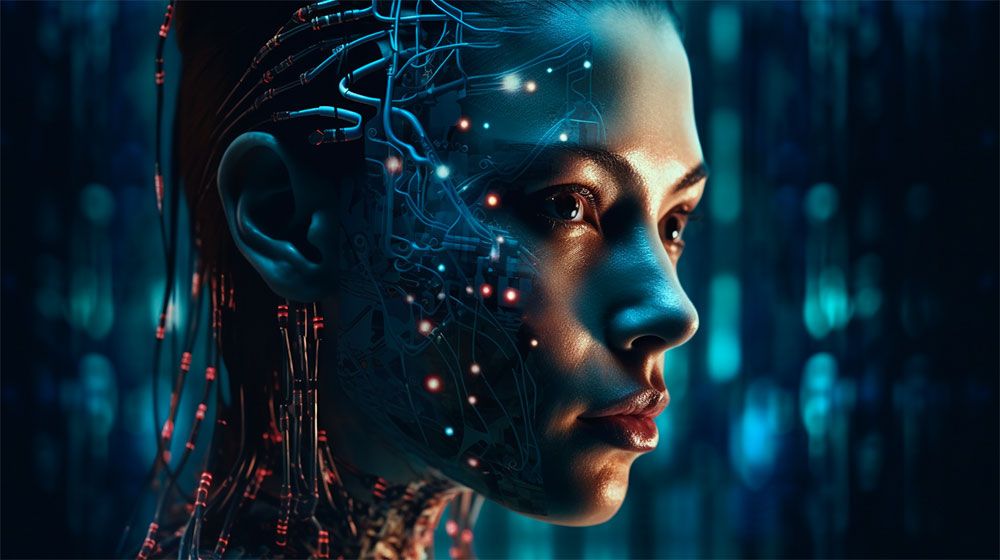
The world of work is constantly evolving, and as technology advances at an unprecedented pace, it is becoming increasingly clear that the workforce of tomorrow will look vastly different from the one we know today. A new term has emerged in this brave new world— the augmented workforce. This term refers to integrating advanced technologies into the traditional workplace to enhance the capabilities of human workers.
But what exactly does this mean for the future of work? How will it impact how we work, and what are the potential benefits and challenges of this emerging trend? This is a topic close to my heart as a futurist, so let's take a closer look at the exciting possibilities and potential challenges of this emerging trend, and discover how your organisation can leverage the augmented workforce of tomorrow to achieve greater efficiency, productivity, and success.
Analysis of the Augmented Workforce
As businesses increasingly turn to advanced technologies such as generative AI and automation to drive productivity and efficiency, the concept of an augmented workforce is gaining momentum. As opposed to traditional work approaches that rely solely on human labour, an augmented workforce integrates advanced technologies into the workplace to enhance the capabilities of human workers. This emerging trend has the potential to transform the way we work. It is essential to understand how this trend will affect your business by examining its key characteristics and potential implications.
In this analysis of the augmented workforce, we will explore its definition, key features, and the challenges and opportunities associated with this new approach to work. Get ready to discover how the augmented workforce could revolutionise the way we work and propel organisations to greater success.
Defining the Augmented Workforce
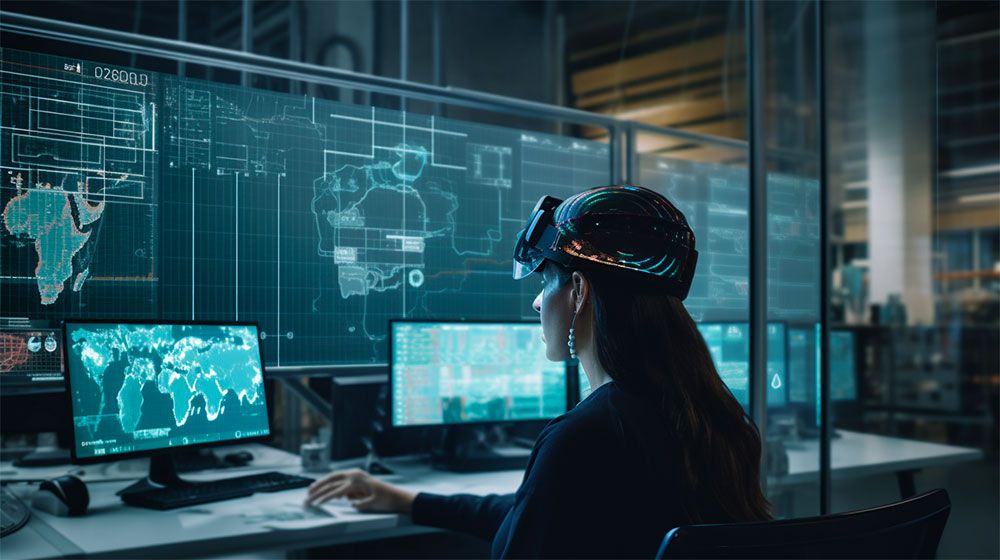
The term "augmented workforce" refers to a new approach to work that leverages advanced technologies such as artificial intelligence (AI), machine learning, and automation to enhance the capabilities of human workers. This integration of technology and human labour—also known as "bionic organisation"—transforms how businesses operate and creates new opportunities for organisations to streamline processes, reduce costs, and drive growth.
The augmented workforce is all about integrating humans and machines to work together. Human workers can perform their jobs more efficiently and effectively by leveraging advanced technologies, while machines can automate routine tasks and provide valuable data to support decision-making. This integration allows workers to focus on tasks that require human ingenuity, such as complex problem-solving and creativity, while the machines handle the more routine and repetitive tasks.
The augmented workforce differs from traditional approaches to work in several key ways. First and foremost, it represents a shift from a labour-centric model to a more technology-focused approach that leverages advanced technologies to enhance the capabilities of human workers. Organisations can streamline processes, reduce costs, and boost productivity by integrating machines and automation into their workplace.
This new paradigm emphasises continuous learning and development, while traditional approaches to work focus on specific job skills. With the rapid pace of technological change, it is essential for workers to continually develop new skills and knowledge to remain relevant in the workforce.
According to a report by the World Economic Forum, upskilling and reskilling workers will be critical to the success of the augmented workforce.
While there are concerns about the potential displacement of human workers by automation, the augmented workforce seeks to augment human labour with advanced technologies to create a more efficient and effective workforce. Automating routine tasks allows humans to focus on tasks requiring unique skills and expertise.
Moreover, the augmented workforce is not limited to any specific industry or sector. From manufacturing and logistics to healthcare and finance, organisations across a wide range of industries are leveraging advanced technologies to enhance the capabilities of their workforce and drive innovation.
The concept of an augmented workforce has gained significant attention among business leaders and industry experts, and many have shared their insights and opinions on this emerging trend. Some experts— including David De Cremer, professor at NUS Business School, founder of the Centre on AI Technology for Humankind, and author of several books on leadership and management, and Garry Kasparov, former world chess champion, is now a human rights activist, speaker, and author focused on artificial intelligence and human-machine collaboration— believe that the augmented workforce has the potential to revolutionise the way we work, creating new opportunities for businesses to streamline operations, increase productivity, and drive innovation. According to a 2022 report by Deloitte, integrating advanced technologies into the workplace can help businesses achieve more productivity than what they currently gain from traditional automation approaches.
However, other experts from the U.S. Government Accountability Office have raised concerns about the potential impact of the augmented workforce on human workers. There are worries that automation could lead to the displacement of workers in certain industries while also creating new skill requirements for workers in other areas. In a 2022 report by the World Economic Forum, it was predicted that the adoption of automation and artificial intelligence could result in the displacement of up to 85 million jobs by 2025.
Although there are concerns about how to manage, what many experts consider a workforce of the future, most agree that businesses can gain significant advantages from integrating technology into their work processes. By leveraging advanced technologies to enhance the capabilities of human workers, businesses can create a more flexible, efficient, and effective workforce that is better equipped to tackle the challenges affecting us around the world.
While the augmented workforce is still in its early stages of development, it is clear that it has the potential to transform the way we work and create new opportunities for businesses and workers alike. As technology continues to evolve, it will be essential for organisations to embrace this emerging trend and take advantage of the opportunities it presents.
Employee Perspectives on AI and the Augmented Workforce
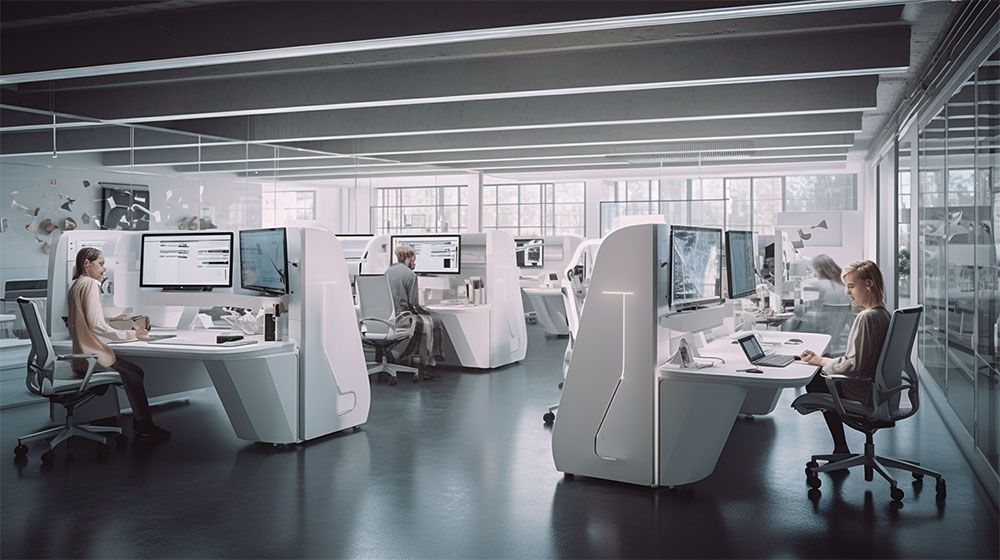
Integrating artificial intelligence and automation into the workforce has become increasingly prevalent, and employees have varying perspectives on the augmented workforce. While some workers view adopting advanced technologies as a potential threat to their job security, others see it as an opportunity to enhance their skills and job satisfaction.
According to a 2021 survey conducted by ABBYY Survey, 52% of workers feel that AI and automation will positively impact their work. This indicates a growing acceptance and optimism among employees regarding the augmented workforce.
New research from 2022 by the Massachusetts Institute of Technology (MIT) also reveals that workers who can collaborate effectively with AI and automation tools are more likely to report high levels of job satisfaction and engagement. This suggests that the integration of advanced technologies into the workforce has the potential to improve employee well-being and job performance, as well as overall business outcomes.
A new concept that has been proposed in the discussion of augmented workforces is "human-in-the-loop" AI. This refers to AI systems that require human input and oversight to function effectively. Rather than replacing human workers, these systems are designed to work in collaboration with them, augmenting their abilities and decision-making processes. This approach has gained popularity as a way to address concerns about job displacement and maximise the benefits of AI and automation while minimising potential risks.
In the long run, however, I believe that the human-in-the-loop is only temporary, as more organisations will transition to fully automated organisations, which will minimise the number of employees required to do the work.
In recent discussions about the augmented workforce, building trust between workers and AI systems has been highlighted as an important area of focus. As AI and automation become more integrated into the workforce, workers must trust that these systems are reliable and that their decisions are transparent and explainable. This requires a focus on ethical AI development and a commitment to transparency and accountability in deploying AI systems. Above all, it requires employees to understand AI and other emerging technologies well.
In addition, discussions around the augmented workforce are increasingly centring on the role of governments and policymakers in shaping the future of work. As AI and automation transform the workforce, policymakers grapple with issues such as job displacement, income inequality, and the need for upskilling and reskilling programs. There is a growing recognition of the need for collaborative efforts between governments, businesses, and workers to ensure that the benefits of the augmented workforce are shared equitably and that workers are prepared for the changing nature of work.
How Generative AI will Shape the Augmented Workforce of the Future
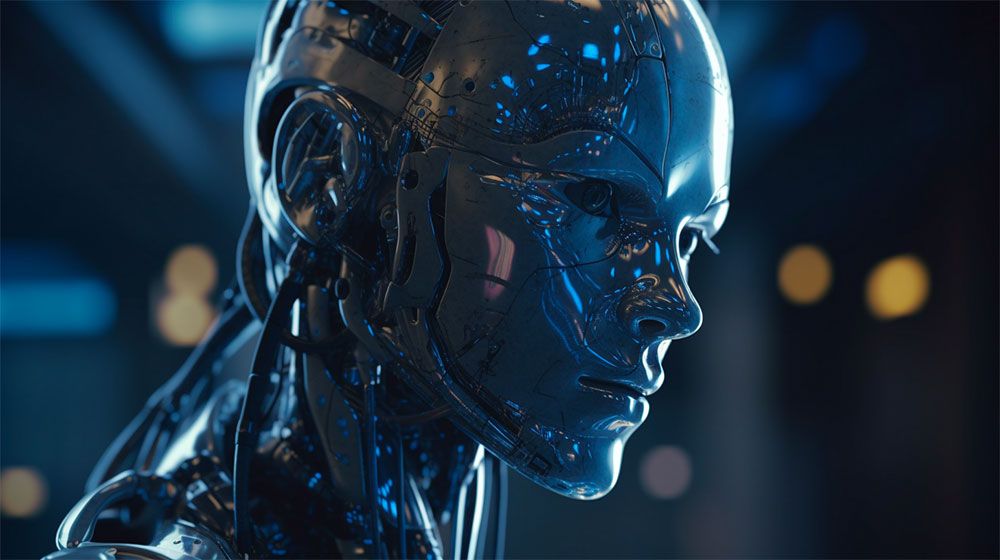
Recent developments in Generative AI have the potential to significantly influence the augmented workforce. Using advanced AI models such as GPT-4, companies can generate automated content that saves time and increases productivity. This could lead to new possibilities for content creation, copywriting, customer service and even healthcare, to name a few industries. With the right approach, Generative AI has the potential to augment human skills and create a more efficient and productive workforce. This technology can transform how we approach work and unlock new possibilities for businesses to innovate and grow.
Here are a few examples of how generative AI is already being used to augment the workforce:
- Content generation: Large Language Models such as GPT-4 or Bard can be used to automate content creation for articles and social media posts. This can save content creators significant time and resources, allowing them to focus on other tasks.
- Chatbots and customer service: Generative AI is used to create intelligent chatbots and virtual assistants that can interact with customers and answer common questions. This can reduce the time it takes customers to receive answers and make them feel more satisfied with their transactions.
- Design and creativity: Generative AI is being used to generate designs for logos, websites, and other creative projects. Designers use brainstorming sessions to generate new ideas and explore different possibilities.
- Data analysis and decision-making: Generative AI is used to analyse large datasets and generate insights to help businesses make more informed decisions. Analysing data in a way that allows for faster decision-making can reduce both the time and resources needed.
These are just a few examples, and we can expect to see many more applications of generative AI in the future as the technology continues to evolve.
The Impact of AI on the Most Relevant Jobs and Industries
The impact of AI on jobs and industries is a topic that has received significant attention in recent years, and the conversation continues to evolve as new research and data become available. While there is no doubt that AI and automation will have a profound impact on the workforce, the specific nature and extent of this impact remain a topic of debate and discussion.
The benefits of artificial intelligence are expected to be particularly apparent in situations involving many routines and repetitive tasks. According to a 2017 report from McKinsey—the most recent report on this matter—approximately 50% of all work activities could be automated using existing technology. This is likely to significantly impact jobs that involve predictable, routine tasks, such as data entry, customer service, and assembly line work. However, the report also notes that the impact of automation is likely to be uneven across industries and job types and that there will be significant variation in the pace and scale of automation across different regions. In 2019, the Brookings Institution researched this issue, concluding that implementing AI should consider geographical factors to avoid exacerbating existing imbalances.
The potential for AI to transform industries and local labour markets is both exciting and daunting, and a coordinated effort is needed to mitigate potential negative impacts. However, there are huge differences across the world and between developed and developing countries in how AI is applied and used. The report also suggests that by learning from past experiences and committing to helping communities and workers adjust to change, we can create a future where AI benefits all communities.
Another point of discussion about the impact of AI on jobs and industries is the potential for new job creation. While it is true that some jobs are likely to be displaced by automation, experts also suggest that AI will create new job opportunities in areas such as data analysis, machine learning, and robotics. In fact, a recent report released in 2023 from the World Economic Forum predicts that AI will create 97 million new jobs globally by 2025.
There is also recognition that the impact of AI on the workforce is likely to be uneven across different regions and industries. For example, while automation may significantly impact manufacturing jobs in developed countries, it may have a more limited impact in developing countries where labour costs are lower. Similarly, while AI will likely transform some industries, it may have a more limited impact on others.
However, the impact of AI on jobs is not the only factor to consider. AI is also expected to significantly impact industries and business models. For example, AI is already transforming the healthcare industry, potentially improving patient outcomes, increasing efficiency, and reducing costs. Similarly, AI is expected to play an increasingly important role in the transportation industry, improving safety and reducing traffic congestion.
It is also important to consider that the impact of AI on the workforce is not just a matter of jobs being replaced or created but also of how work is organised and structured. For example, AI may lead to changes in how work is done, with a greater emphasis on remote work, flexible hours, and project-based work. This may require new skills and working methods, and businesses and workers must adapt accordingly.
The impact of AI on jobs and industries is a complex and multifaceted topic that requires careful consideration and planning. AI will likely bring significant benefits and opportunities, but it will also likely have significant implications for the workforce and the broader economy. As such, businesses, policymakers, and workers need to collaborate and plan for the future to ensure that the benefits of AI are shared equitably and that the transition to a more automated workforce is as smooth as possible.
Benefits of AI Technology on the Augmented Workforce

AI has the potential to transform the way we work, providing new opportunities for efficiency, productivity, and innovation. AI can help businesses and workers achieve more with less effort, time, and resources. In this section, we will explore the various benefits that AI technology can bring to the augmented workforce, including increased accuracy, speed, and consistency, improved decision-making, and enhanced creativity and collaboration.
Increased Productivity, Efficiency, and Creativity
The benefits of AI technology on the augmented workforce are numerous and significant. One of the most prominent benefits is the potential for increased productivity and efficiency. AI can automate routine tasks and processes, freeing up time for workers to focus on more complex and creative work. According to a report by McKinsey presented by the European Parliament, AI has the potential to increase global GDP by up to $13 trillion by 2030 through increased productivity and efficiency.
Generative AI could free human workers to focus on higher-value tasks such as strategy, decision-making, and customer service, while generative AI handles the more routine and repetitive tasks. In addition, generative AI could help address skill shortages and enable businesses to expand into new areas by creating customised solutions for specific industries or applications. With the help of generative AI tools like ChatGPT, or Midjourney, organisations can generate high-quality content in a fraction of the time it would take a human to do so, enabling them to be more productive and efficient.
The use of chatbots powered by AI has become increasingly popular in various industries. These chatbots are designed to mimic human conversations and provide assistance to customers or employees in a timely and efficient manner. In the context of the augmented workforce, chatbots can play a crucial role in improving productivity and efficiency. For instance, companies can use chatbots to automate routine tasks such as answering customer queries, processing orders, and scheduling appointments. This frees up time for human workers to focus on more complex and creative tasks.
Also, chatbots can help employees collaborate more effectively. For example, a chatbot could mediate between team members, facilitating real-time communication and information sharing. This can help reduce communication gaps and enhance collaboration within teams. These chatbots can also be used to generate high-quality content quickly and efficiently. This is especially useful in industries such as marketing, where content creation is a time-consuming process. With the help of any of the thousands of AI tools now available, organisations can create engaging and personalised content at scale without the need for human intervention.
Streamlining Processes using Generative AI
ChatGPT is a powerful AI tool that can play a significant role in implementing an augmented workforce, as it is currently happening. With its ability to generate natural language responses and insights, ChatGPT can streamline various HR processes, including recruitment, onboarding, and training. For example, ChatGPT can assist in candidate screening and selection, providing real-time feedback to hiring managers.
ChatGPT can also provide employees personalised training and development opportunities, helping them acquire new skills and stay up-to-date with the latest trends in their respective fields. This can improve employee satisfaction and retention rates, ultimately leading to a more efficient and effective workforce.
Research has shown that ChatGPT can improve communication and collaboration among team members, resulting in better decision-making and problem-solving. For example, by analysing chat logs and other communication data, ChatGPT can identify potential communication breakdowns or areas where team members struggle to collaborate effectively. This can enable managers to provide targeted training or coaching to improve team dynamics and productivity.
Plus, ChatGPT can help businesses improve their customer service and satisfaction levels. ChatGPT can enhance the overall customer experience by providing real-time support and personalised recommendations, leading to increased loyalty and retention rates. This can ultimately contribute to the bottom line of the organisation.
As AI technology continues to evolve, the role of ChatGPT and other AI tools in the workforce is expected to grow significantly. These tools will likely become increasingly integrated into organisational processes, leading to more efficient and effective operations.
Improved Decision-Making and Problem-Solving
Artificial intelligence technology transforms work by enabling employees to make better decisions faster. AI-powered tools can process vast amounts of data and provide valuable insights that humans may not have been able to uncover on their own. This can lead to more informed and data-driven decisions.
Moreover, AI-powered tools can also help identify patterns and trends that may not be immediately visible to human workers. For example, in the healthcare industry, AI tools can analyse patient data to identify potential health risks and help doctors make more accurate diagnoses. Likewise, AI can analyse financial data to identify patterns and trends that may indicate potential risks or opportunities.
AI-powered tools can also help streamline decision-making processes. For example, in supply chain management, AI can analyse data to optimise inventory levels and delivery routes, leading to more efficient operations and cost savings. A survey released in 2017 by PwC found that 72% of business leaders believe AI will be a significant business advantage in the future, thanks to improved decision-making and productivity. Later, in 2022, a new report by PwC stated that the percentage of companies that take a comprehensive approach to AI implementation would be approximately 36.6% at the time of research.
Challenges of Building an Augmented Workforce
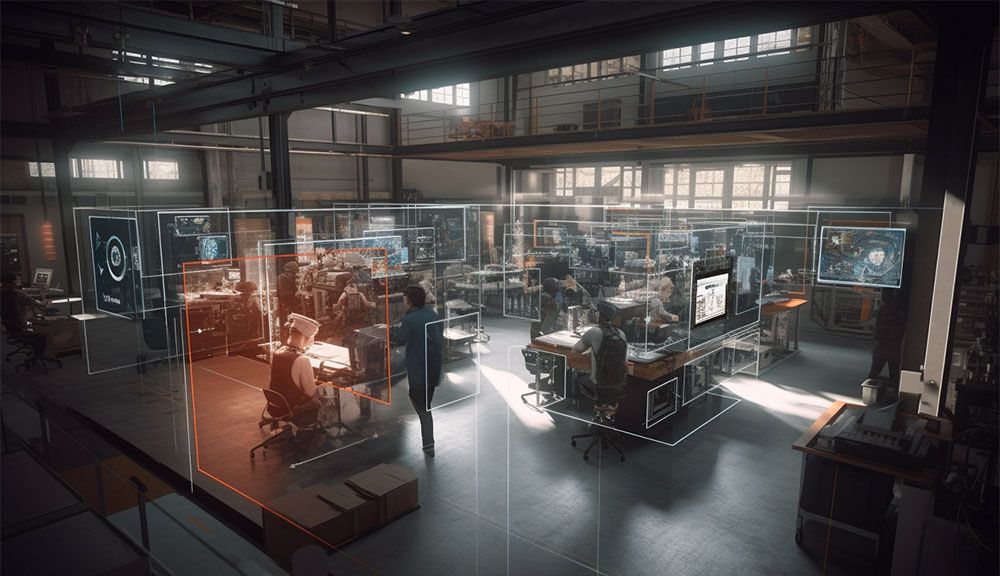
As businesses seek to stay ahead in the ever-evolving landscape of the global economy, many are turning to emerging technologies such as AI and machine learning to streamline operations and improve performance. However, implementing an augmented workforce also poses several challenges, from technological limitations to cultural shifts. In this section, we will explore some key challenges organisations face when integrating AI and other technologies into their workforce and discuss potential strategies for overcoming these obstacles.
Job Displacement and Worker Privacy Concerns
One of the most pressing concerns surrounding the implementation of an augmented workforce is the potential displacement of human workers. As AI and automation advance, many jobs may become obsolete or undergo significant transformations. This can be a source of anxiety for workers and can lead to resistance to technological change. However, it is important to note that while some jobs may be automated, new jobs will also be created in fields such as data analysis, software engineering, and AI management.
According to a 2020 report by the World Economic Forum, while technological advances may lead to job displacement in the short term, they will also create new jobs and opportunities in the long term. The report suggests that by 2025, emerging technologies such as AI will create millions of jobs in machine learning, education and data science.
Concerns about worker privacy are growing as AI systems become more pervasive in the workplace. With increased data collection and analysis, employees may feel that their privacy is being violated, especially in areas such as performance monitoring and biometric identification. Organisations must address these concerns by implementing transparent data policies and ensuring employee privacy rights are respected.
To address concerns about job displacement, organisations must take proactive steps to reskill and upskill their workforce to adapt to the new technological landscape. This can include investing in training programs and creating new roles that utilise human skills such as creativity and critical thinking, which are less easily automated.
In terms of worker privacy, organisations can implement policies that prioritise transparency and employee consent when collecting and analysing data. They can work with employees to establish clear boundaries around what data will be collected and how it will be used and ensure that data is stored securely and complies with relevant regulations.
It is key to approach the challenges of implementing an augmented workforce with a balanced perspective, understanding the potential benefits and the concerns. Organisations can use a thoughtful and proactive approach to successfully integrate AI technologies into their workforce while prioritising the well-being of employees.
Ethical Implications of AI-Powered Decision-Making
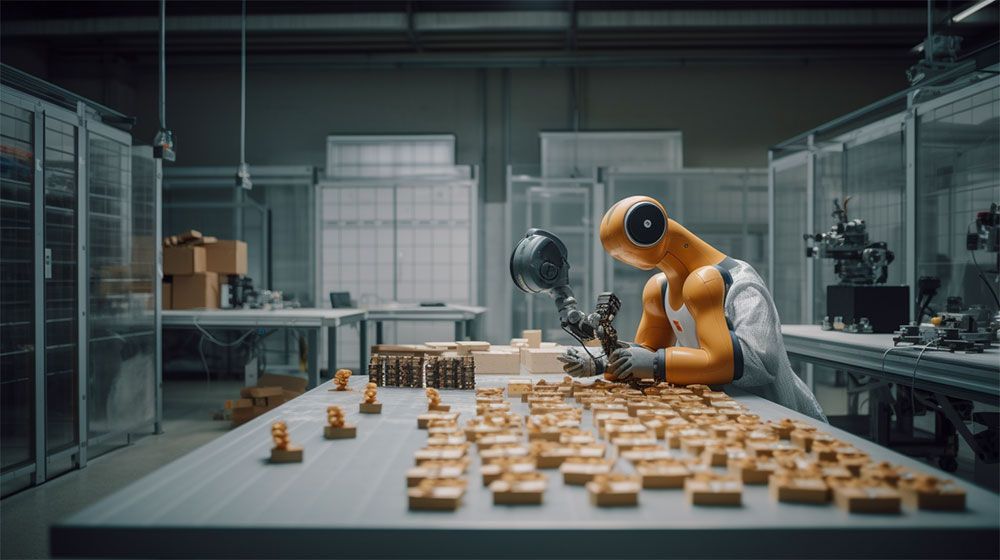
The rise of AI-powered decision-making has brought a host of ethical concerns that cannot be ignored. While AI algorithms can process vast amounts of data and make decisions faster and more accurately than humans, there are significant risks associated with relying solely on technology to make important decisions.
Recently, the Future of Life institute started an initiative in the form of an open letter called Pause Giant AI Experiments: An Open Letter. The open letter calls for a pause on the development and training of artificial intelligence systems more powerful than GPT-4 for at least six months, to develop and implement a set of shared safety protocols for advanced AI design and development rigorously audited and overseen by independent outside experts.
The letter highlights the risks posed by AI systems with human-competitive intelligence, the need for responsible management and planning, and the development of AI governance systems based on an ethical framework to mitigate potential harm. The authors emphasise the importance of making current AI systems more accurate, safe, interpretable, transparent, robust, aligned, trustworthy, and loyal, rather than continuing to engage in a dangerous race to create ever-larger and unpredictable black-box models. I agree with the call for a pause to stop and think, but only if it applies to all industries, including car makers such as Tesla, who also work on advanced AI for their car and robot.
One major concern is the potential for algorithmic bias, where the data used to train AI systems is biased and leads to discriminatory outcomes. AI systems are only as unbiased as the data and algorithms they are trained on, which means that if there are inherent biases in the data or algorithms, the AI system will learn and replicate those biases. This is particularly troubling in areas such as hiring and lending decisions, where biases can perpetuate and amplify existing inequalities. There are concerns about accountability and transparency in decision-making and the potential for AI systems to be hacked or manipulated.
For example, facial recognition technology has been shown to have higher error rates for people with darker skin tones and women, which could have serious implications in areas such as law enforcement and hiring practices. This has raised concerns about the fairness and accuracy of AI decision-making and the need to ensure that biases are identified and addressed throughout the development and implementation process.
Experts are increasingly emphasising the need for ethical considerations to be integrated into developing and deploying AI systems. This includes ensuring that the data used to train AI is diverse and representative and implementing systems for ongoing monitoring and auditing of AI decision-making. It is also crucial for organisations to prioritise transparency and accountability, providing clear explanations of how AI decisions are made and allowing for human oversight when necessary.
Another significant problem is that the inner workings of AI-powered programs are often inscrutable, making it hard to tell how they reach their conclusions. Many AI systems use complex algorithms and machine learning models that are difficult for humans to interpret or understand. This lack of transparency makes it challenging to hold AI systems accountable for their decisions and raises questions about who is responsible if something goes wrong.
As AI becomes increasingly integrated into our daily lives, it is essential that we carefully consider the ethical implications of this technology and work to ensure that its benefits are shared equitably across all members of society. Only by taking proactive steps to address these challenges can we fully realise the potential of AI to improve decision-making and enhance our lives.
Technological Limitations and Integration Challenges
Organisations that look to implement augmented workforce solutions, face several technological limitations and integration challenges. Among these limitations, we find the inability of current AI technologies to fully replicate human decision-making and cognitive abilities. While AI can improve productivity and efficiency, it cannot fully replace human intuition and creativity.
Another challenge is the integration of AI with existing systems and processes. This requires significant investment in IT infrastructure, as well as the need for specialised skills and expertise. According to analysts and technologists, the cost of training a big language model like GPT-4 is estimated to exceed $4 million, which represents a significant challenge for companies today. Also, there may be resistance from employees who fear AI and advanced chatbots like ChatGPT will replace their jobs, highlighting the importance of communication and collaboration between management and employees during the implementation process.
It is highly advisable that organisations carefully consider the costs and benefits of implementing augmented workforce solutions, as well as the potential risks and challenges. Organisations should also work closely with AI vendors and invest in employee training and upskilling programs to ensure the successful integration and adoption of AI technologies.
Harvard research shows that integrating AI with existing systems is a significant challenge, as companies struggle to implement the necessary changes to support AI-powered workflows. Moreover, experts point out that the lack of standardisation and interoperability between AI platforms can further complicate the integration process. To address these challenges, organisations need to prioritise investments in IT infrastructure and collaboration and communication between IT and business teams. It is also important to focus on the development of AI-powered systems that are user-friendly and accessible to employees of all levels of technical expertise.
Organisations will likely continue to grapple with the challenges of implementing an augmented workforce, but it is clear that the benefits of AI-powered technologies are significant, we just need to apply careful consideration and planning necessary to ensure successful integration and adoption.
HR Strategy for an Augmented Workforce
As we explore the potential of an augmented workforce, it becomes increasingly evident that HR strategy needs to adapt to this new era. It is no longer enough to hire talented individuals and assign tasks, as integrating AI technology requires a more strategic and holistic approach. A successful human resource strategy for a workforce augmented by technology is based on providing employees with the necessary training and education. Allowing them to work with AI requires teaching technical skills and instilling a mindset that embraces change and innovation.
Creating a culture of innovation and collaboration is another crucial aspect of an HR strategy for an augmented workforce. According to a 2021 report by McKinsey, companies that successfully integrate AI into their businesses do not just use it to automate processes; they reimagine how work gets done to create new value. This requires a collaborative culture where employees feel empowered to share their ideas and work together towards a common goal. Also, a culture of innovation allows for continuous improvement and adaptation as AI technology evolves.
Proper training and education, combined with a culture of innovation and collaboration, can help organisations maximise the benefits of an augmented workforce while mitigating the challenges. As AI continues to shape the future of work, HR leaders must adapt their strategies accordingly and prioritise the development of their employees.
It is also vital for companies to create a culture of innovation and collaboration, where employees are encouraged to experiment with new ideas and work collaboratively across departments. This not only fosters a more creative and dynamic work environment but also helps to break down silos and facilitate better communication.
There is also growing recognition among industry experts of the need for a more strategic approach to HR management that aligns with the overall business strategy and incorporates AI technologies into talent management processes. This includes using AI-powered tools for recruitment, talent assessment, and performance management.
Lastly, companies must prioritise ethical considerations when designing their HR strategies for an augmented workforce. This includes ensuring transparency in decision-making processes, establishing clear guidelines for using AI systems, and protecting employee privacy rights.
The Future of Work and the Augmented Workforce
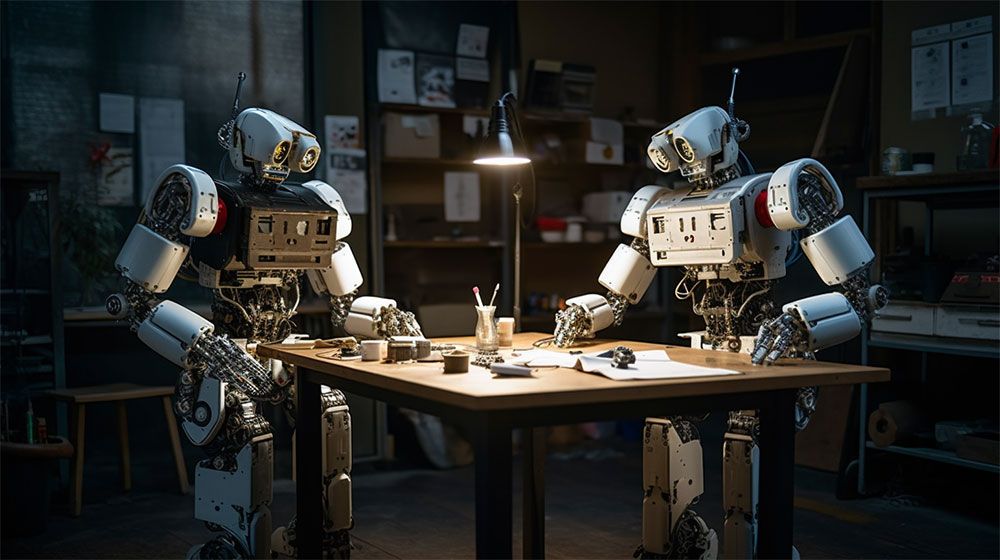
As we move into a world where the augmented workforce plays an increasingly significant role, organisations have begun to reflect this shift by shaping structures and management practices accordingly. Many experts predict that AI and automation technologies will continue to accelerate, leading to a more dynamic and agile workforce. This will undoubtedly have significant implications for the roles and responsibilities of workers, as well as the skills and knowledge required for success in the modern workplace.
Perhaps the most important outcome of the augmented workforce is the creation of new types of jobs and the restructuring of traditional roles. As AI becomes more prevalent in customer service, human employees may shift to high-level tasks requiring empathy, critical thinking, and problem-solving. This will require focusing on upskilling and reskilling employees to ensure they have the necessary expertise to thrive in this new environment.
Another area of focus will be the integration of AI and automation technologies into organisational structures and management practices. This will require a significant shift in how companies approach work and talent management, as well as how they measure performance and success. For example, using chatbots and other AI-powered tools for customer service may require a new approach to performance management that considers the ability of these tools to handle routine tasks and free up human employees to focus on higher-value work.
In short, the future of work and the augmented workforce is a complex topic with multiple ramifications, with many potential implications for organisational structure and management practices. As we continue to explore these possibilities, it will be important for companies to stay attuned to the latest trends and best practices, as well as to the needs and desires of their employees. By doing so, they can ensure that they are well-positioned to thrive in the rapidly evolving world of work.
Final Thoughts
The augmented workforce of tomorrow represents a promising future where humans and technology work hand in hand to achieve unparalleled productivity and efficiency. With the rise of AI, robotics, and other advanced technologies, the workforce is evolving at an unprecedented pace, and companies that fail to embrace this change risk being left behind. However, the benefits of a well-designed augmented workforce are significant, including increased productivity, better decision-making, and improved employee satisfaction.
We now look forward to an exciting future, where it is essential to recognise that the augmented workforce is not a replacement for human workers but rather a complement to them. It is time to leverage technology to augment human capabilities to create a more agile, innovative, and successful workforce that can tackle the complex challenges of the 21st century.
Images: Midjourney





